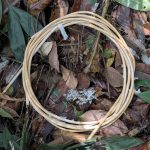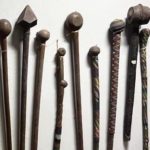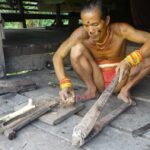Remotely living Hadzabe people use three types of arrow poison to bag big game animals. However, due to the shrinkage in the size of their areas, they currently produce only two kinds. I will describe these arrow poisons briefly to record and document as much information as possible on these crucial auxiliary tools for hunting. As one article covering all three types of arrow poisons would be too long for comfortable reading, I have split the topic into two parts. This article (Part 1) covers the arrow poison based on the Adenium plant. Part 2 will cover arrow poison based on Strophanthus– and Acokanthera species.
Types of arrow poison used by Hadzabe people
According to Daudi Peterson in his book ‘By The Light Of A Million Fires,’ Hadza people use the following arrow poisons:
- Panjuko, made from Desert roses (Adenium obesum)
- Shanjoko, made from Poison arrow vine plants (Strophanthus eminii)
- K’alik’asi, made from Arrow poison trees (Acokanthera schimperi)
Panjuko
Extracts of the Desert rose, also called Impala lily (Adenium obesum), are the most commonly used arrow poison by the Hadza people, who call it Panjuko. The plant can be found globally, and its distribution range spans from Sub-Saharan Africa via the Arab Peninsular to the tropical Asia Pacific areas.

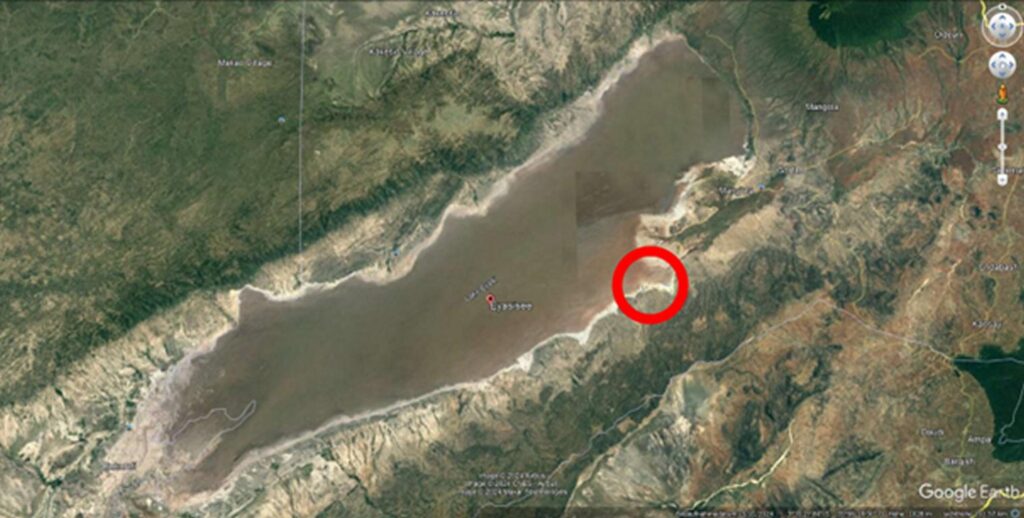
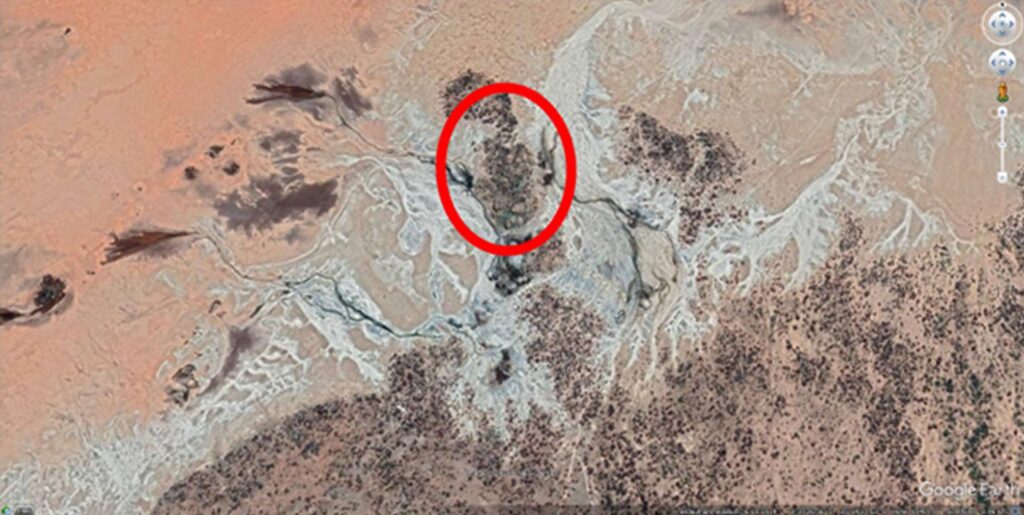
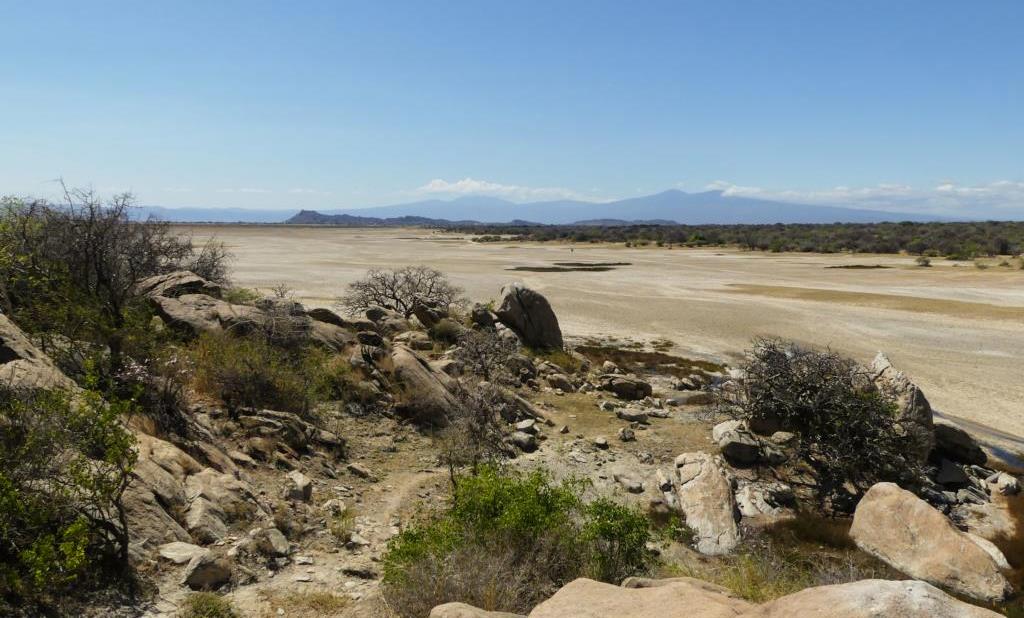
In the Hadzabe people’s area, Desert Roses mainly occur on an island on the Southeastern shore of the Eyasi salt lake. Remotely living Hadzabe people from the hills around the lake regularly come to this place to harvest their raw material to produce arrow poison from Desert roses.
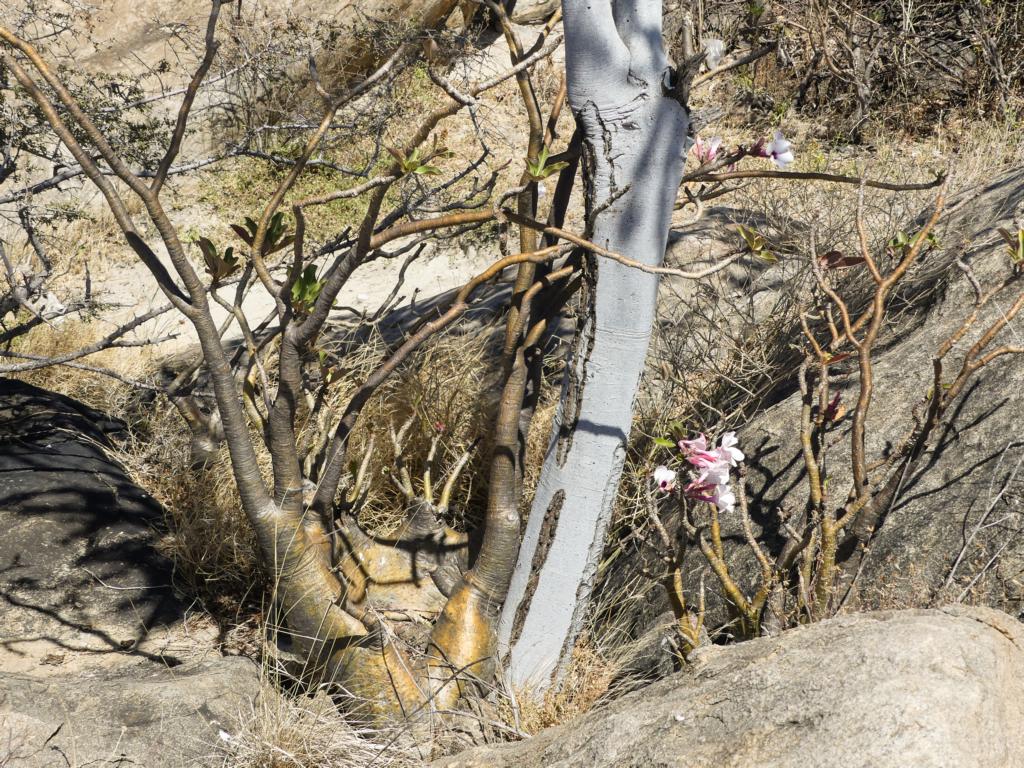
This species can be easily identified by its bulbous trunk, smooth and shiny bark, conspicuous flowers, and seed capsules. Further botanical information can be found here.
Effect of the poison
All parts of Desert Rose plants contain cardiac glycosides, toxic compounds that can lead to significant poisoning when they enter the bloodstream. Early signs of poisoning include drooling, vomiting, and diarrhea. As the poisoning progresses, the shot animals become weak, lethargic, and unsteady on their feet. Finally, they will develop alterations to the electrical activity in their hearts, which often leads to cardiac arrest and death.
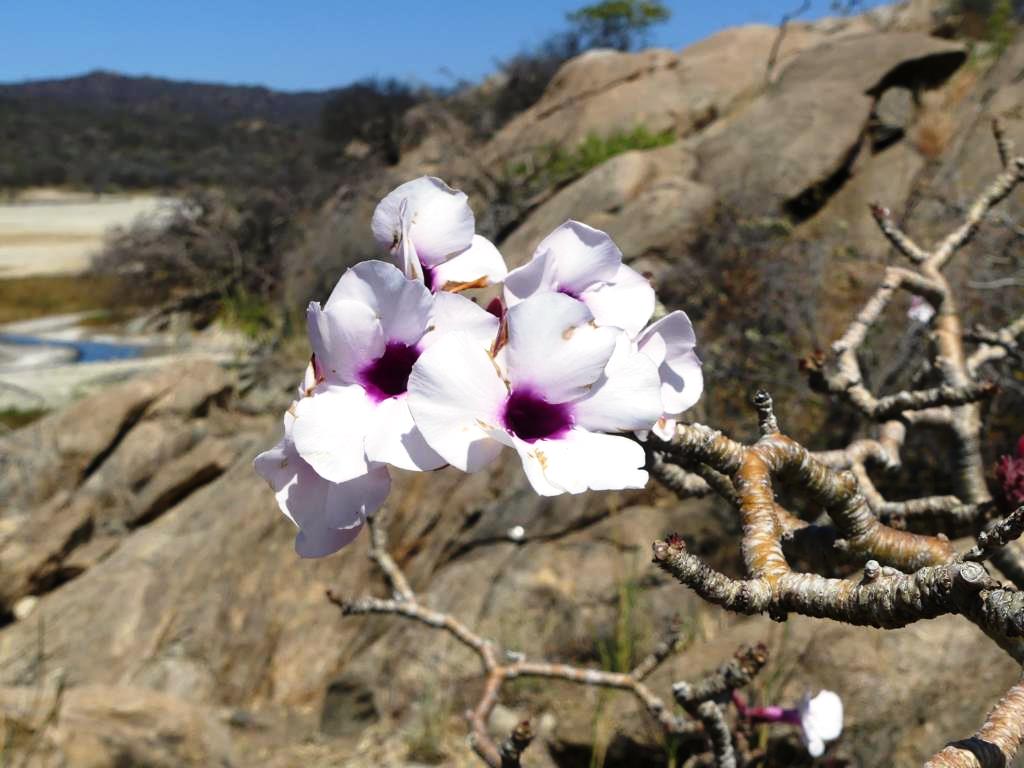
The effect of the poison is variable depending on the size of the animal, at which body part it was hit, and how strong the poison was. For example, an impala dies after less than half an hour, a zebra one hour, and a buffalo or a giraffe in 3 to 6 hours. However, there are sometimes cases where large animals recover after a period of ‘drunkenness,’ as reported by D. Peterson.
When Hadza people follow the tracks of a hit animal, they sometimes taste and then spit out the blood drops to determine how strong the poison is in the blood. Increased bitterness indicates intense poisoning.
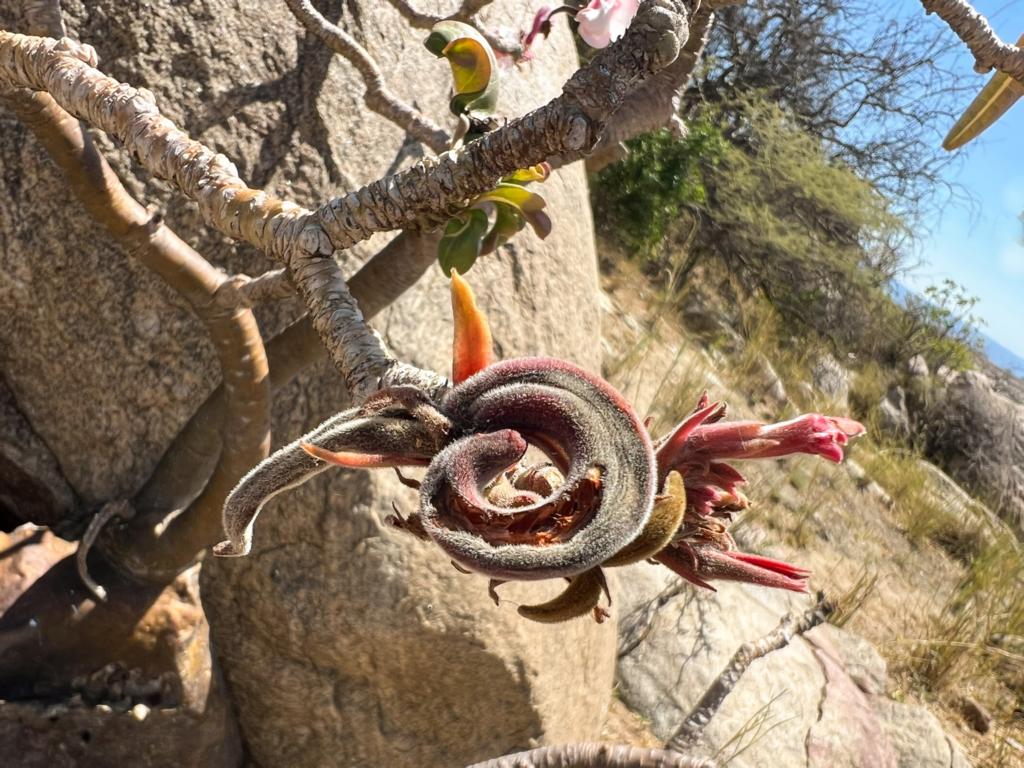
The iron arrowhead must be withdrawn as quickly as possible after finding the animal to prevent the surrounding meat from being contaminated by the poison. The flesh around the place the animal was hit must be removed. Generally, the poison is treated with great care that borders on respect. As there is no antidote, Hadza children must learn early to avoid playing with poison arrows that are often within their reach.
Harvesting of Desert rose plant material.
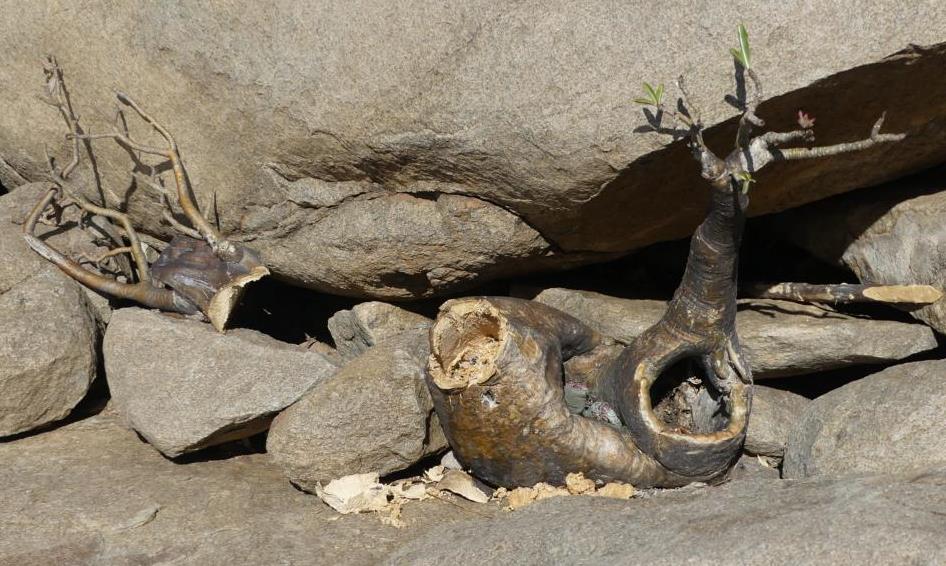
All parts of the plant contain the mentioned toxins, which can be used to produce the poison. The most productive method is hollowing out the thick trunk of a Desert rose and harvesting the inner wood, which is full of milky sap. If a suitable trunk is unavailable, men cut off a branch or pound it into pulp while still attached to the plant. They can remove the blade in their ax and use the large end of the wooden handle to pound with or find a similarly shaped piece of wood.
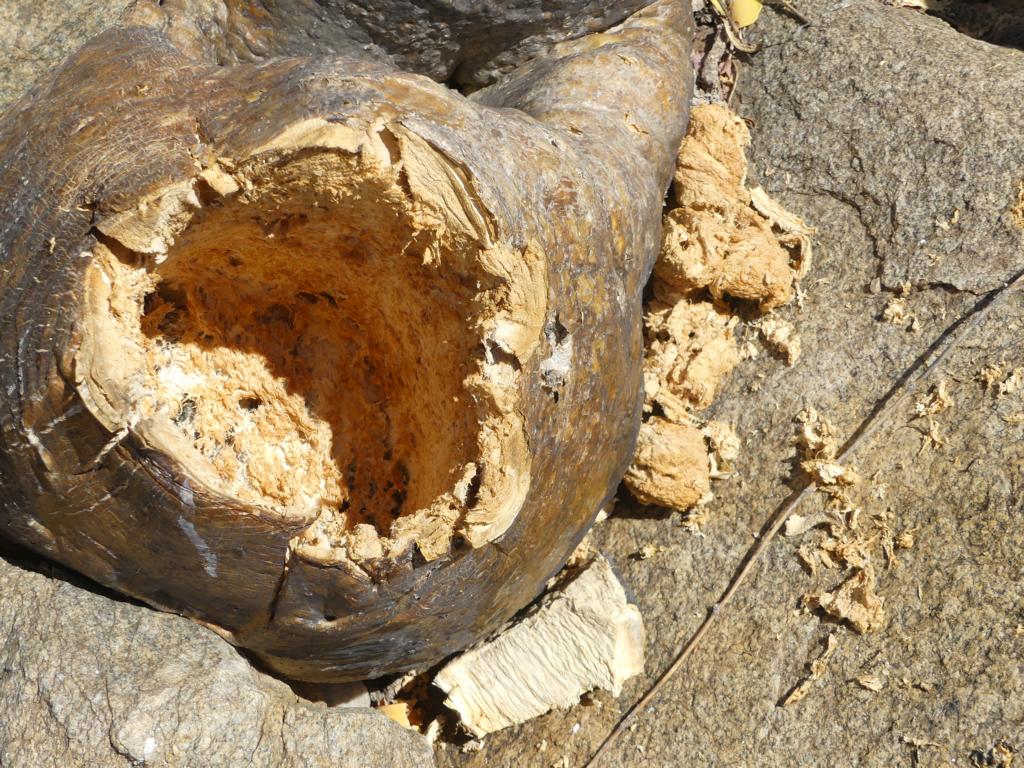
However, the Hadzabe often do this in a usually wasteful way. Although the availability of Desert roses is limited, they just cut off the trunk at a low point, remove the spongy, juicy sapwood, and leave the rest rotting in the sun.
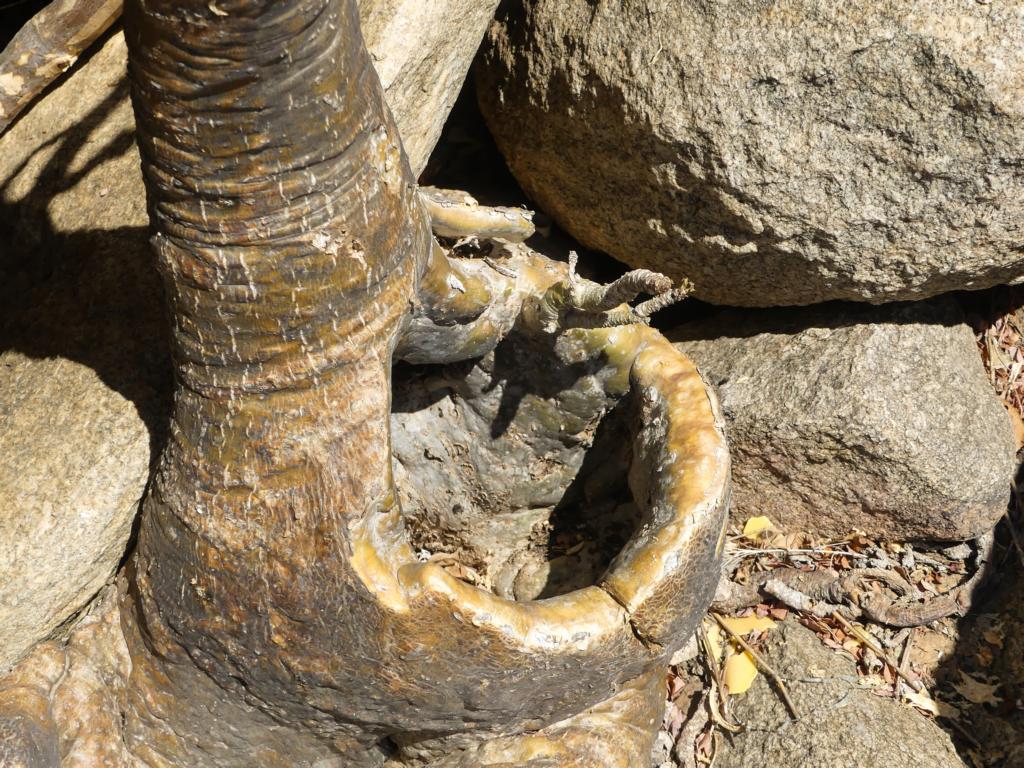
Consolation is that the Desert rose trees speedily overgrow these wounds with bark and start growing new shoots within a year. Also, the twigs are used for poison production in areas with less availability of Desert rose plants. These twigs will be cut into 2,5cm / 1’’ thick slices for extraction.
Producing arrow poison from Desert rose sapwood juices.
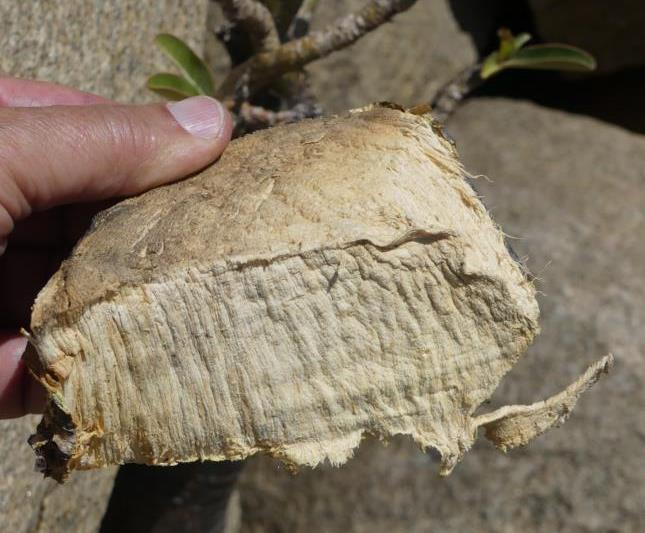
The following steps are taken to extract and produce arrow poison from Desert rose sapwood:
- Chunks of sapwood from the inner parts of a desert rose tree or well-beaten pulp will be placed on a piece of cloth, and the sap will be pressed into a pot.
- This sap is boiled vigorously until a bubbly, sticky, brownish-black substance remains at the bottom of the pot. As the amount of water in the plant juice is low, the boiling time will be short.
- This substance will now be scratched out from the bottom and formed into a lump the size of thick Hamburger patties. Poisonous substances extracted from plant juice are more consistent than those extracted from wood pieces.
- This poison putty is now dusted with wood ash from the fire on both flat sides. It is then pounded with a stone until it shows a uniform dark color and smooth consistency.
- This dry putty will now be formed into a flat string and wound around the shaft of an iron arrowhead. Heating the poisonous patty over the embers of a fire will make it soft and pliable again.
- Its surface will finally be smoothed with a small wooden stick dipped into the water. Traditionally, the half on an empty shell of a Baobab fruit serves as a water bowl.
- After handling the poison, everybody cleans his hands with whatever possibilities. These can be water, grasses, sand, tree bark, or others.
- If all of the poison is not required immediately, it can be carried around in a ball, much like clay, until it is needed again.
Producing arrow poison from Desert rose pieces of wood or twigs.
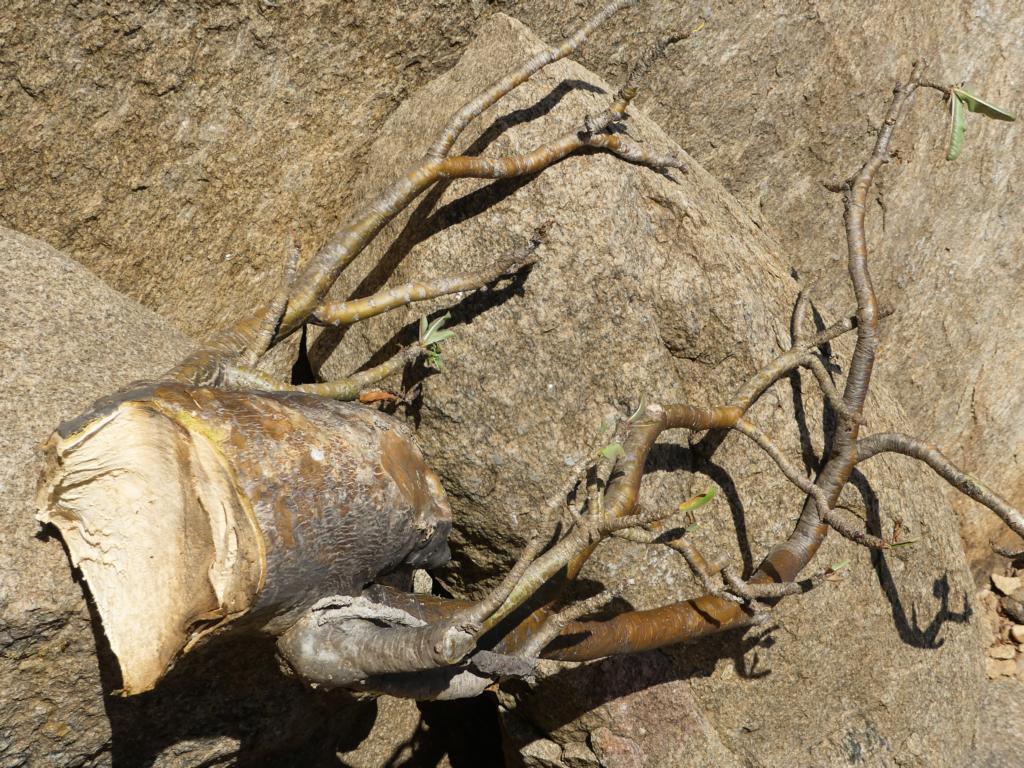
- If using slices of wood or twigs, they are placed into a pot and covered with water.
- The mixture of twigs and water is boiled vigorously until nearly all water is evaporated. This will take around one hour of cooking time. Foam will form in the boiling water and be removed with green leaves. The wooden parts in the mixture will only be removed shortly before complete evaporation. After that, a bubbly, brownish-black, sticky substance remains at the bottom of the pot.
- This substance will now be scratched out from the bottom. It is formed into a lump the size of thick Hamburger patties. This substance is rougher and more uneven than substances boiled from plant juices alone.
- The poisonous substance is now dusted with wood ash from the fire. It will then be pounded with a stone until it shows a uniform dark color and smooth consistency.
- As described above, all further steps are the same as using juices directly from Desert rose sapwood.
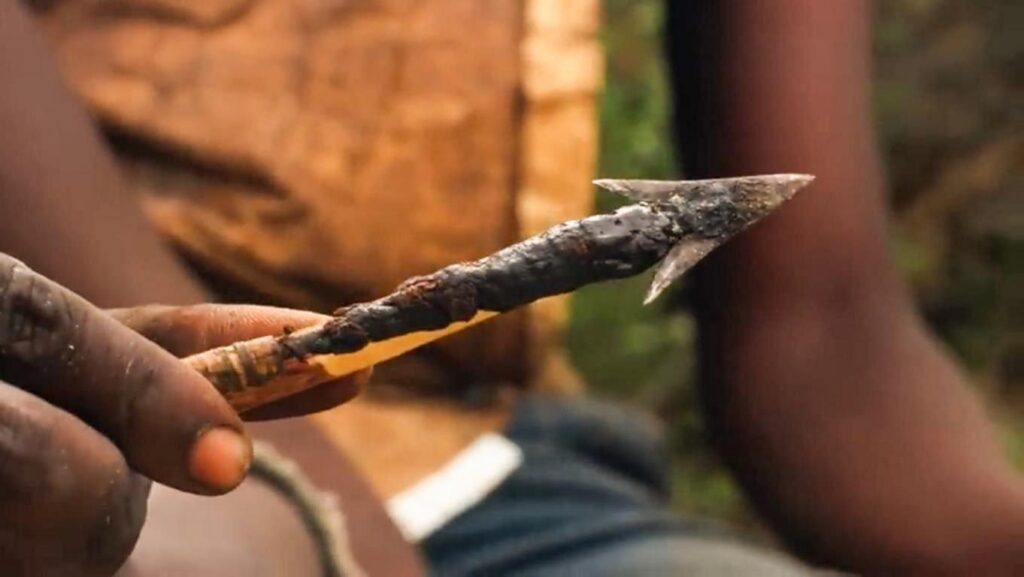
Interestingly enough, some Hadzabe use their only cooking pot for extracting and producing arrow poison from Desert rose plants. They clean it thoroughly with water, and one of the ladies will taste it with her tongue if it still tastes bitter. If it does not taste bitter anymore, they use it to cook their meals in the same pot again.
Lessons learned from Hadza arrow poison from Adenium species:
- An extract of Desert roses (Adenium obesum) is the most common arrow poison used by Hadzabe people.
- Desert roses only grow in a few locations where the Hadzabe people live.
- Extraction is done by boiling either plant juice or plant parts.
- The remaining black residue will be beaten, cut in stripes, and wound behind the arrow tip.
Additional information
My book ‘Hadzabe Survival Skills‘ offers more skills, knowledge, tools, and techniques for the Hadzabe people’s life in their natural environment. It is available on Amazon.com and Amazon’s regional websites.
.



